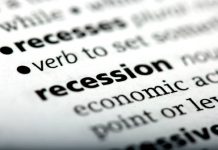Marion Kohler, RBA’s Head of Economic Analysis, noted in a speech that inflation is “still high” but acknowledged a welcome trend: it’s decreasing “at a slightly faster rate” than what RBA had forecasted three months prior.
Looking ahead, RBA’s expectation is for inflation to settle back into its 2-3% target range by 2025 and reach the midpoint by the following year. However, Kohler underscored the “substantial uncertainty” surrounding these long-term predictions.
A notable aspect of Australia’s inflation dynamics, as Kohler pointed out, is the “divergence in the path of core goods and services price inflation.”
The primary driver behind the recent dip in inflation rates is the decrease in goods price inflation, whereas services price inflation remains “high and broadly based.” This sector’s inflation is predicted to “only gradually” diminish as a more equitable demand-supply relationship is established and domestic cost pressures begin to ease.
Kohler also touched on labor costs, particularly significant in the labor-intensive services sector, as a crucial factor influencing the pricing strategies of businesses. RBA believes wage growth is “around its peak” and anticipates a gradual reduction in line with improvements in the labor market. Signs of “easing wage pressures” are already evident in specific industries, notably within business services.













